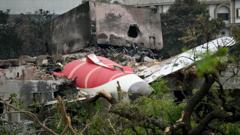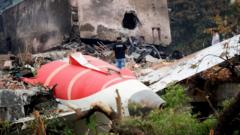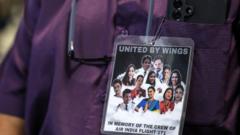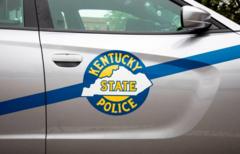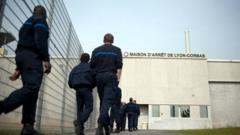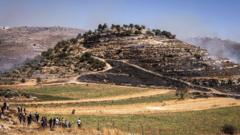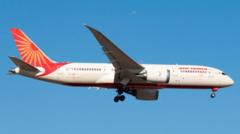A recent preliminary assessment into the catastrophic crash of Air India Flight 171 reveals crucial details about the incident, raising serious questions about pilot actions on the ill-fated flight.
Fuel Cut Off in Air India Flight 171 Crash: Preliminary Investigation

Fuel Cut Off in Air India Flight 171 Crash: Preliminary Investigation
Authorities investigate critical pilot actions in devastating aviation disaster.
On June 12, 2025, shortly after taking off from Ahmedabad's Sardar Vallabhbhai Patel International Airport, Air India Flight 171 tragically crashed, leading to the death of 241 individuals onboard and more than 30 on the ground. The Boeing 787 Dreamliner was revealed to have both engines' fuel cut-off shortly after takeoff, according to investigators from India's Aircraft Accident Investigation Bureau.
The initial findings from the flight's voice and data recorders draw focus towards the fuel switches, suggesting that mechanical failure or design issues were not responsible for the disaster. This has raised concerns regarding the actions taken by the cockpit crew. The report includes a troubling cockpit exchange in which one pilot questioned the other’s choice to cut off fuel supply, to which the other pilot denied such an action.
The aircraft was being flown by Captain Sumeet Sabharwal, boasting over 10,000 flight hours, and First Officer Clive Kunder, who had approximately 3,400 hours of experience. This combined experience, previously underestimated by officials, appears significant against the backdrop of one of India’s darkest aviation moments since the 1996 disaster.
Following the tragic incident, there were no recommended safety actions for either Boeing or General Electric, the manufacturers of the aircraft and its engines, according to the report. As the investigation continues, the focus remains on understanding the decision-making processes in the cockpit leading up to the disaster, which not only changed the lives of many directly involved but also impacted a nation reflecting on aviation safety standards.
The initial findings from the flight's voice and data recorders draw focus towards the fuel switches, suggesting that mechanical failure or design issues were not responsible for the disaster. This has raised concerns regarding the actions taken by the cockpit crew. The report includes a troubling cockpit exchange in which one pilot questioned the other’s choice to cut off fuel supply, to which the other pilot denied such an action.
The aircraft was being flown by Captain Sumeet Sabharwal, boasting over 10,000 flight hours, and First Officer Clive Kunder, who had approximately 3,400 hours of experience. This combined experience, previously underestimated by officials, appears significant against the backdrop of one of India’s darkest aviation moments since the 1996 disaster.
Following the tragic incident, there were no recommended safety actions for either Boeing or General Electric, the manufacturers of the aircraft and its engines, according to the report. As the investigation continues, the focus remains on understanding the decision-making processes in the cockpit leading up to the disaster, which not only changed the lives of many directly involved but also impacted a nation reflecting on aviation safety standards.






